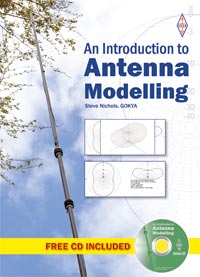This is the software that Gwyn G4FKH uses to produce the monthly HF predictions for RSGB’s RadCom magazine and which was produced by the ITU.
Gwyn adapted it to produce a graphical output, which can be found at www.predtest.uk
But I was intrigued to see if I could use it to produce some predictions for the worldwide International Beacon Project (IBP) chain that runs on 14, 18, 21, 24 and 28MHz. I won’t go into too many details here about the IBP network as you can find all you would want to know at http://www.ncdxf.org/beacon/
The good news is that as they all use the same power output (100W max.) and the same antenna (pretty much a unity gain or +2.15dBi antenna) it should be fairly easy to model what the expected signal strength should be here in the UK.
ITURHFPROP runs in Windows and uses an input file with all the parameters needed, such as your QTH lat. and long., the transmitter’s lat. and long., required SNR, bandwidth, smoothed sunspot number, power etc etc.
You then run it from the command line and it creates an output file.
I ended up creating input files for each of the beacons, and a spreadsheet that can take each of the output Field Strength (dB(1uV/m)) figures and convert them into S units.
I then created a batch file that runs all of the predictions for each of the beacons in one go. With an I5 processor this takes less than about 15 seconds.
The spreadsheet then formats these so that I can produce the chart you see on the page. This may sound long-winded, but it really doesn’t take long. I’m sure someone with Python programming skills could automate the whole thing, but I wanted to make sure it worked first before going any further.
The end result has proved to be quite accurate and shows that at this point in the sunspot cycle we can’t expect miracles in terms of hearing the distant beacons. While some are audible on 14 and 18MHz, generally we are not hearing much above that.
In the UK, what have been audible quite regularly this month on 14.100MHz are RR90 (Novosibirsk, Siberia), CS3B (Madeira), 4U1UN (New York) and occasionally 4X6TU (Tel Aviv).
It also shows what the effect of an elevated K index can be as this generally means the beacons are less audible (if there at all) as the MUF declines. We have been suffering from the adverse effects of coronal holes recently and that isn't going to end any time soon.
You can see the predicted MUF over different path lengths in near real-time using the graphed ionosonde data for the UK at http://www.convectiveweather.co.uk/ionosphere/graphs.php?type=live
This was produced by fellow RSGB Propagation Studies Committee member Jim G3YLA and his colleagues at Weatherquest in Norwich.
I’ve posted the predictions here to see if they are of interest to anyone. If they are I’ll update them monthly.
To view the January IBP prediction chart full size just click here.










Heya i'm for the first time here. I came across this board and I find It truly helpful & it helped me
ReplyDeleteout a lot. I'm hoping to present one thing back and help others like you aided me.